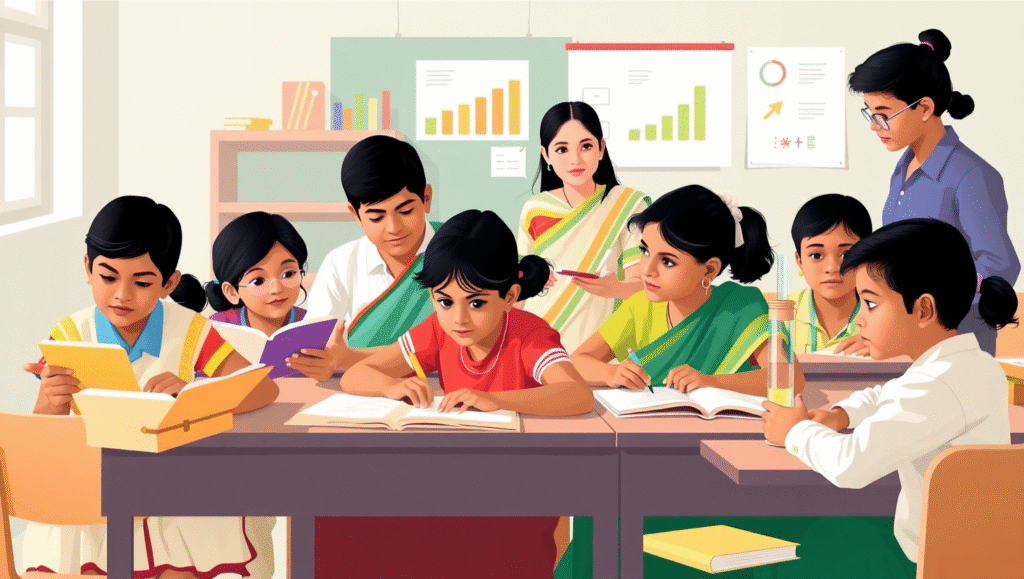PARAKH Rashtriya Sarvekshan Report – Learning Outcomes in India
Syllabus: Issues relating to Development and Management of Education (GS II)
Source: The Hindu
Context:
The PARAKH Rashtriya Sarvekshan Report (2024), released by the Ministry of Education, highlights critical learning gaps in mathematics, language, and science among students of Grades 3, 6, and 9 across India. The findings raise serious concerns regarding the effectiveness of school-level education and foundational learning in the country.
About PARAKH:
- Full Form: Performance Assessment, Review, and Analysis of Knowledge for Holistic Development
- Nature: A competency-based national student assessment, earlier known as the National Achievement Survey (NAS)
- Conducted by: NCERT in December 2024
- Mandated by: Ministry of Education, as part of India’s national assessment architecture
Key Findings by Grade Level:
Grade 3
- Language:
- 60% could read and understand short stories and instructions
- 67% demonstrated basic vocabulary usage
- Mathematics:
- 55% could arrange numbers up to 99
- Only 54% understood multiplication/division
- Half could identify geometric shapes or transact with money up to ₹100
Grade 6
- Mathematics:
- Only 38% solved daily-life arithmetic problems
- 29% could work with fractions
- 42% estimated area, perimeter, and volume
- Environmental Studies & Social Understanding:
- 44% described natural/social surroundings
- 38% recognized patterns (e.g., moon phases, rituals, seasons)
- 56% understood institutions like banks, schools, and panchayats
Grade 9
- Language:
- 54% extracted key ideas from editorials/reports
- Mathematics:
- 28–31% applied percentages/fractions in real life
- 31% understood number sets (integers, rational, real numbers)
- Science:
- 34% identified living vs. non-living traits
- 37% explained phenomena like pressure, temperature, and density
- Only one-third understood electric circuits or hormonal changes
Performance Trends:
Top Performing States/UTs (All Grades):
- Punjab, Kerala, Himachal Pradesh, Chandigarh, Dadra & Nagar Haveli and Daman & Diu
Low-Performing Districts:
- Garo Hills (Meghalaya), Shi Yomi (Arunachal Pradesh)
- Reasi & Rajouri (J&K), Sahebganj (Jharkhand)
School Type Trends:
- Grade 3: Kendriya Vidyalayas recorded lowest math scores
- Grade 6: Poor outcomes in state-run and aided schools
- Grade 9: Kendriya Vidyalayas topped in language performance
Implications for Policy and Governance:
- Highlights persistent learning gaps despite policy reforms like NEP 2020
- Calls for urgent interventions in foundational literacy and numeracy (FLN)
- Emphasizes the need for teacher capacity building, assessment reforms, and targeted remedial programs
- Data-driven approach can guide evidence-based policymaking and district-level planning
Conclusion:
The PARAKH report underscores the urgent need for educational reforms to address systemic learning deficits at early and middle school levels. Bridging these gaps is essential to realizing the goals of NEP 2020, ensuring equity, quality, and foundational learning for all students. A data-backed, competency-oriented, and locally adaptable education strategy is vital for India’s human capital development in the 21st century.











